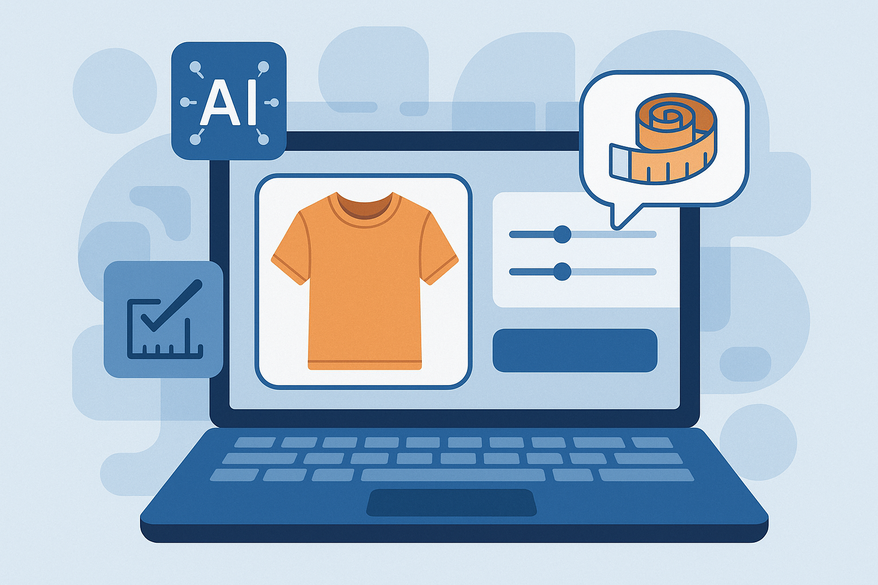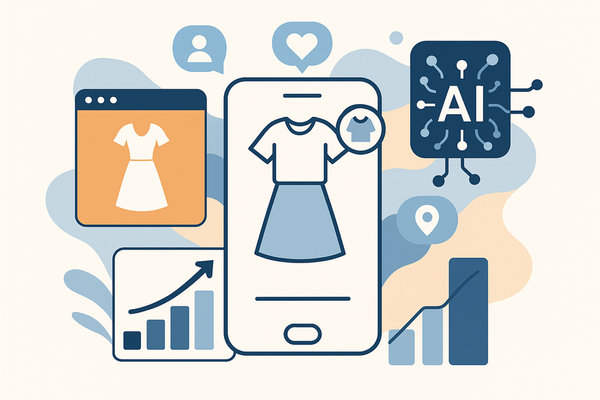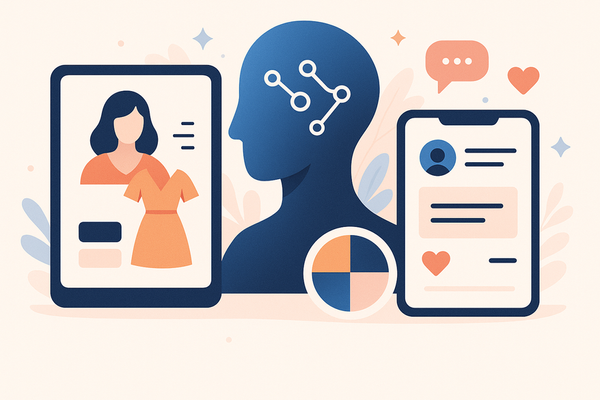Personalized Fit Advisor: How AI Delivers Tailored Style & Perfect Fit
Discover how a personalized fit advisor uses AI to offer tailored style and sizing recommendations, enhancing shopping experiences with perfect fits.

Estimated reading time: 8 min read
Key Takeaways
- Data-driven style: AI analyzes body measurements, preferences, and context for perfect-fit suggestions.
- Core technologies: Machine learning, computer vision, NLP, and hybrid recommender systems power personalization.
- Measurable benefits: Returns cut by 20–30%, customer satisfaction and conversion rates rise, waste decreases.
- Structured workflow: Four-step process from data collection to continuous feedback ensures accuracy.
- Future trends: Advanced 3D scanning, AR mirrors, contextual intelligence, and sustainable on-demand manufacturing.
Table of Contents
- 1. Defining the Personalized Fit Advisor
- 2. How AI Enables Personalized Fit Solutions
- 3. Benefits of Using a Personalized Fit Advisor
- 4. The Process Behind AI-Driven Style Advisory
- 5. Future of Personalized Fit Advisors in Fashion
- 6. Conclusion
1. Defining the Personalized Fit Advisor
A personalized fit advisor is an AI-driven virtual stylist that uses machine learning, computer vision, and natural language processing to recommend clothing items perfectly suited to an individual’s body type and style preferences. This digital stylist isn’t just a size chart—it’s a dynamic system that learns from you.
Why It Matters
- Moves retail beyond standard S–XL sizing to custom recommendations.
- Enhances inclusivity by adapting to all body shapes and profiles.
- Delivers a secure, privacy-compliant experience under GDPR and CCPA guidelines.
Core Definitions
- Machine Learning: Algorithms that learn your shape and style over time.
- Computer Vision: Image analysis that validates fit and extracts body landmarks.
- Natural Language Processing (NLP): Interprets text prompts like “wedding guest dress.”
Real-World Example
YesPlz’s ChatGPT-powered AI stylist assembles complete looks—from business meetings to beach days—in seconds, offering users outfit options that match their measurements and mood. (Source: YesPlz AI stylist announcement)
2. How AI Enables Personalized Fit Solutions
Personalized fit advisor technology relies on several AI pillars that work together seamlessly:
Data Inputs
- Body Measurements
– Smartphone scanning (3D LiDAR or multi-angle photos).
– In-store kiosks with depth cameras for instant scans. - Style Preferences
– Interactive quizzes: color, cut, and trend polls.
– Past purchases & returns history for pattern analysis.
– Direct chat prompts: “Casual office look” or “summer garden party.” - Contextual Data
– Occasion, season, local climate, and cultural events feed into the model.
Algorithms & Models
- Machine Learning Classifiers: Cluster body shapes into groups (pear, apple, hourglass) for initial fit zones.
- Computer Vision: Convolutional neural networks detect body landmarks—shoulders, waist, hips—from uploaded images.
- Natural Language Processing: NLP models parse text requests and user feedback to refine style understanding.
- Recommender Systems: Hybrid filtering: collaborative (other users with similar profiles) + content-based (fabric type, brand ethos).
Technical Details
- CNN Feature Extraction: Layers isolate edges, shapes, and textures to map 3D contours.
- Collaborative Filtering: Finds peer-group style matches, boosting serendipity.
- Content-Based Filtering: Tags product attributes (stretch, pattern, silhouette) for precision recommendations.
Security & Privacy
- End-to-end encryption for uploaded images and measurements.
- Anonymized data storage to comply with global privacy standards.
3. Benefits of Using a Personalized Fit Advisor
Personalized fit advisor platforms deliver measurable value for both shoppers and retailers:
Improved Customer Satisfaction
- Shoppers get items that fit true to size and match their taste, creating a “wow” moment.
- Brands that listen grow trust and loyalty, driving positive reviews and referrals.
Reduced Returns
- Accurate size algorithms can cut return rates by up to 20–30%.
- Less packaging waste and shipping costs benefit both the environment and profit margins.
Higher Engagement & Conversion
- Personalized suggestions boost time on site by 25–40%.
- Conversion rates climb as consumers find their perfect match quickly.
Pair these fit insights with a smart wardrobe tool like Ultimate AI Closet Organizer to keep your entire closet optimized and ready to wear.
4. The Process Behind AI-Driven Style Advisory
A robust personalized fit advisor follows a structured workflow to deliver pinpoint accuracy:
Step 1: Data Collection
- Mobile body-scan cameras capture sub-millimeter measurements.
- Online questionnaires gather style, occasion, and budget preferences.
- In-store smart mirrors or kiosks provide a privacy-first scanning environment.
Step 2: Data Analysis & Profile Building
- AI models convert raw measurements into a detailed 3D body profile.
- NLP engines analyze free-text feedback and past purchase comments to build a style persona.
- Machine learning classifiers assign body-shape clusters and style archetypes.
Step 3: Recommendation Generation
- Recommender engine synthesizes fit score, style match, brand loyalty, price thresholds, and event context.
- Results formatted into shoppable carousels, styling boards, or automated outfit emails.
- Combine with automatic pairing tools like Automatic Outfit Pairing App for full outfit suggestions in seconds.
Step 4: Feedback Loop & Continuous Learning
- Post-purchase reviews and return reasons feed back into the training set.
- Closed-loop learning ensures each interaction sharpens future recommendations.
- Seasonal trend analysis updates the model with fresh data from social media and fashion shows.
5. Future of Personalized Fit Advisors in Fashion
As AI and hardware evolve, personalized fit advisor systems will become even more immersive and precise:
Advanced 3D Body Scanning
- Smartphone LiDAR and depth sensors will capture full-body scans in real time, offering sub-millimeter accuracy for bespoke tailoring.
- Wearable tech (smart scarves or belts) could continuously update measurements.
Smarter Contextual Understanding
- AI models will integrate seasonal trends, cultural events, and hyper-local climate data.
- Direct social media feeds may identify emerging style influencers and viral looks.
Hybrid Virtual/In-Store Experiences
- AR-powered smart mirrors overlay AI suggestions onto shoppers’ live reflections.
- Virtual try-on rooms let customers see garments from multiple angles before purchase.
Supply Chain & Sustainability
- On-demand manufacturing driven by precise fit data reduces overstock and landfill waste.
- Brands can implement circular fashion programs by tracking garment lifecycle from fit data through resale.
Innovation Watch:
• Blockchain-linked measurement records could guarantee authenticity and privacy of personal data.
• Voice-activated virtual stylists will guide hands-free shopping experiences.
Conclusion
Personalized fit advisor technology is redefining fashion by combining data science with customer-centric design. We explored its definition, core AI components, tangible benefits like reduced returns and higher engagement, the four-step advisory process, and exciting future trends. As virtual stylists become more accurate and accessible, shoppers will enjoy confidence-boosting recommendations that respect privacy and sustainability. Ready to experience tailored style advice? Try a free demo of a leading personalized fit advisor today and see how AI can elevate your wardrobe.
For a holistic AI-driven overview of how fit data integrates into your entire glow-up journey, Maxx Report delivers an interactive fit check alongside insights on symmetry, color analysis, and more.





